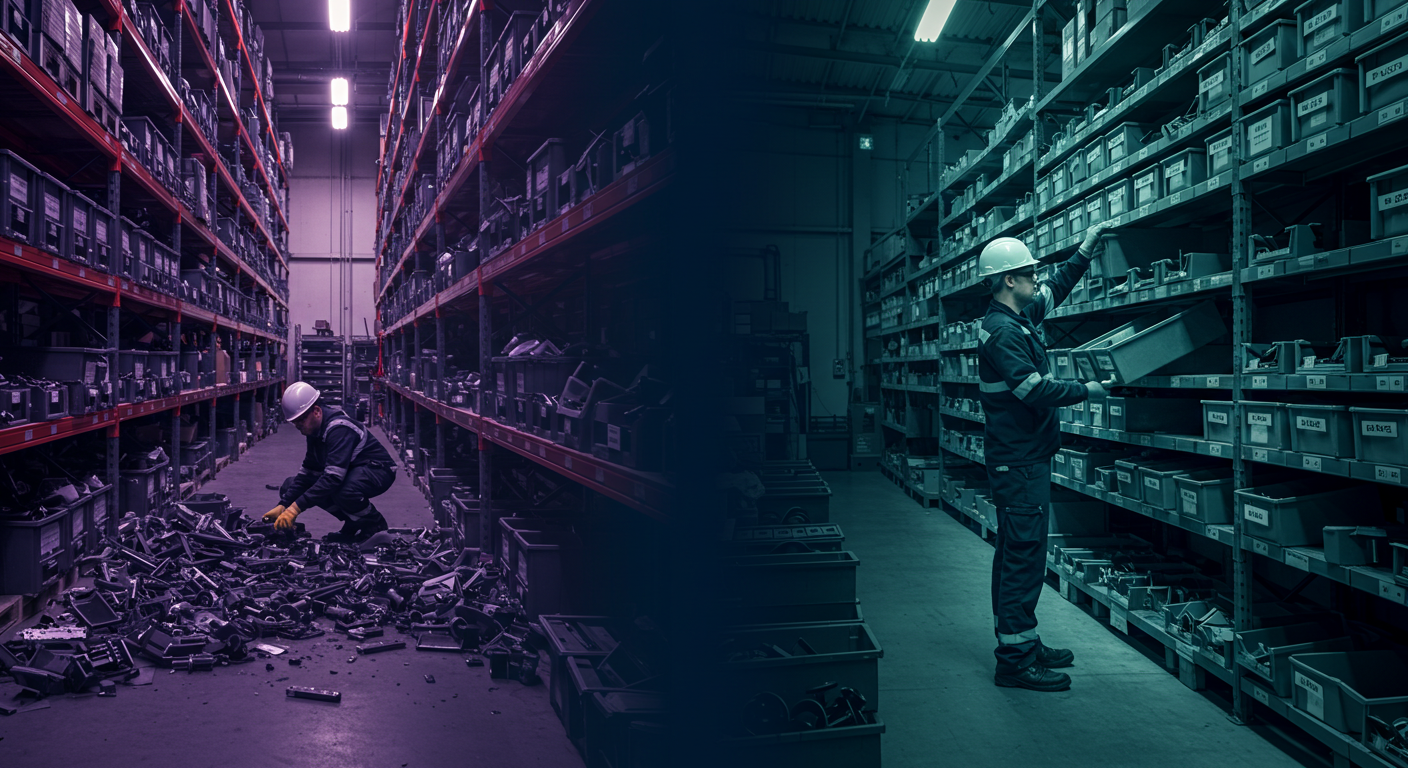Step-by-Step Guide to Streamlining Your Industrial Relocation Process
The Challenge of Industrial Relocation
Industrial relocations involve complex logistics beyond simple transportation, requiring careful coordination of machinery dismantling, transport, and reassembly while minimizing operational disruptions. Each phase presents unique challenges that demand specialized expertise and methodical planning.
According to research published in the International Journal of Operations & Production Management, during economic downturns, production relocation activities decline significantly as companies focus on utilizing existing capacity at their home locations Emerald. This research, based on data from 1,484 German manufacturing companies, provides valuable insights into how economic conditions influence relocation decisions.
This comprehensive guide breaks down the industrial relocation process into manageable phases, providing actionable strategies based on industry research to ensure a smooth transition for your manufacturing equipment.
Phase 1: Comprehensive Asset Inventory and Categorization
A thorough asset inventory forms the foundation for any successful relocation. This critical first step helps prevent equipment misplacement and establishes clear priorities for the moving process.
Asset Categorization:
- Complete Equipment Roster: Document every piece of machinery with make, model, serial numbers, and physical dimensions
- Create Detailed Descriptions: Include condition reports and photographs for each item
- Implement Digital Tagging: Use QR codes or similar digital tags for easier identification during disassembly and reassembly
- Establish Central Database: Maintain a central digital inventory database for accurate tracking
Strategic Equipment Categorization
Categorize machinery by:
- Criticality to Operations: Which equipment should be moved first/last to minimize downtime?
- Complexity of Dismantling: Which machines require specialized contractors or extended teardown?
- Replacement Difficulty: Which components would cause the most significant delays if damaged?
- Regulatory Considerations: Which equipment requires special permits or compliance documentation?
According to research from McKinsey Global Institute and the World Economic Forum, Industry 4.0 technologies have an estimated value-creation potential for manufacturers of $3.7 trillion by 2025 McKinsey & Company. Digital tracking systems are a key component of this transformation.
Phase 2: Machinery Dismantling and Packing
With a comprehensive inventory and plan in place, proceed to the machinery dismantling and packing phase.
Machinery Dismantling:
- Sequential Dismantling Protocol: Document the original configuration with photographs from multiple angles
- Assign Digital Tags: Tag each component with a unique identifier linked to your system
- Document Disassembly: Record the dismantling process through photos and videos
- Record Connection Points: Document all connection points, alignment notes, and torque specifications
Component Tagging and Tracking:
Each removed component should be immediately:
- Tagged with waterproof, durable identifiers
- Logged in your tracking system
- Photographed in its dismantled state
- Matched with required hardware and mounting components
Packing Requirements:
Different components require specific packing approaches:
- Electronic Controls: Anti-static, moisture-resistant packaging
- Precision Components: Custom crating with vibration isolation
- Hydraulic Systems: Containment for residual fluids and protective caps for connections
- Structural Elements: Appropriate support to prevent warping during transport
Phase 3: Transport and Compliance
Ensuring machinery arrives safely at the new location and adheres to all compliance standards is critical.
Transport Monitoring:
- GPS Tracking: Monitor the transportation process in real-time
- Real-Time Updates: Receive updates on location and route deviations
- Environmental Monitoring: Track temperature, humidity, and shock exposure
- Alert Systems: Implement automated alerts for any deviations from acceptable parameters
Permit and Regulatory Requirements:
- Road Permits: Secure permits for oversized or overweight equipment
- Route Surveys: Conduct surveys for height restrictions or weight limitations
- International Documentation: Prepare shipping manifests and customs clearance
- Compliance Documentation: Upload all documents to a centralized platform
Research published in the Journal of Purchasing and Supply Management identifies key drivers and antecedents of manufacturing offshoring and backshoring from a German perspective Emerald, highlighting the importance of proper planning for facility relocations.
Phase 4: Reassembly and Testing at the New Location
Once machinery arrives at the new location, the reassembly and testing phase begins.
Site Readiness Verification:
Before equipment arrival, ensure:
- Foundation and mounting points meet specifications
- Utility connections are ready and verified
- Environmental conditions are suitable
- Access routes from delivery point to final position are clear
Machinery Reassembly:
- Reassembly Documentation: Use the digital inventory to verify all received items
- Display Instructions: Provide assembly instructions and diagrams
- Condition Check: Check the condition of each item upon arrival
- Follow Original Configuration: Reference documentation created during disassembly
Operational Testing:
- Graduated Testing Approach: Start with "dry" testing without materials
- Trial Runs: Progress to low-volume trial runs
- Performance Verification: Conduct full specification performance verification
- Comparative Analysis: Compare performance data against pre-relocation benchmarks
Phase 5: Post-Relocation Asset Management
After relocation, maintain efficient asset management through continuous monitoring and improvement.
Asset Tracking and Management:
- Monitor Equipment Health: Track equipment health and maintenance schedules
- Digital Documentation Repository: Consolidate all relocation knowledge
- Performance Tracking: Document performance metrics compared to pre-move baselines
- Maintenance Scheduling: Update maintenance requirements based on relocation impacts
Embracing Technology for Relocation Success
Industrial relocations will always present challenges, but implementing a systematic approach with appropriate technology support transforms this potential disruption into a strategic opportunity. Companies that master the relocation process gain significant advantages:
- Faster return to full production capacity
- Reduced equipment damage and performance degradation
- Lower total relocation costs through efficiency and prevention
- Improved documentation compliance and operational knowledge
Research studies from Kinkel (2012) demonstrate that companies need to understand and prepare for dynamic developments at different locations which can strategically necessitate backshoring after a certain time Fraunhofer. This highlights the importance of viewing relocations as strategic decisions rather than purely cost-driven ones.
By following these five critical phases and leveraging purpose-built tools like reloTrack, your next industrial relocation can become a model of operational excellence rather than a source of disruption and expense.
Ready to streamline your next industrial relocation?
Start your 30-day free trial of reloTrack today and discover how our purpose-built platform can transform your machinery relocation process from a source of stress to a competitive advantage.



